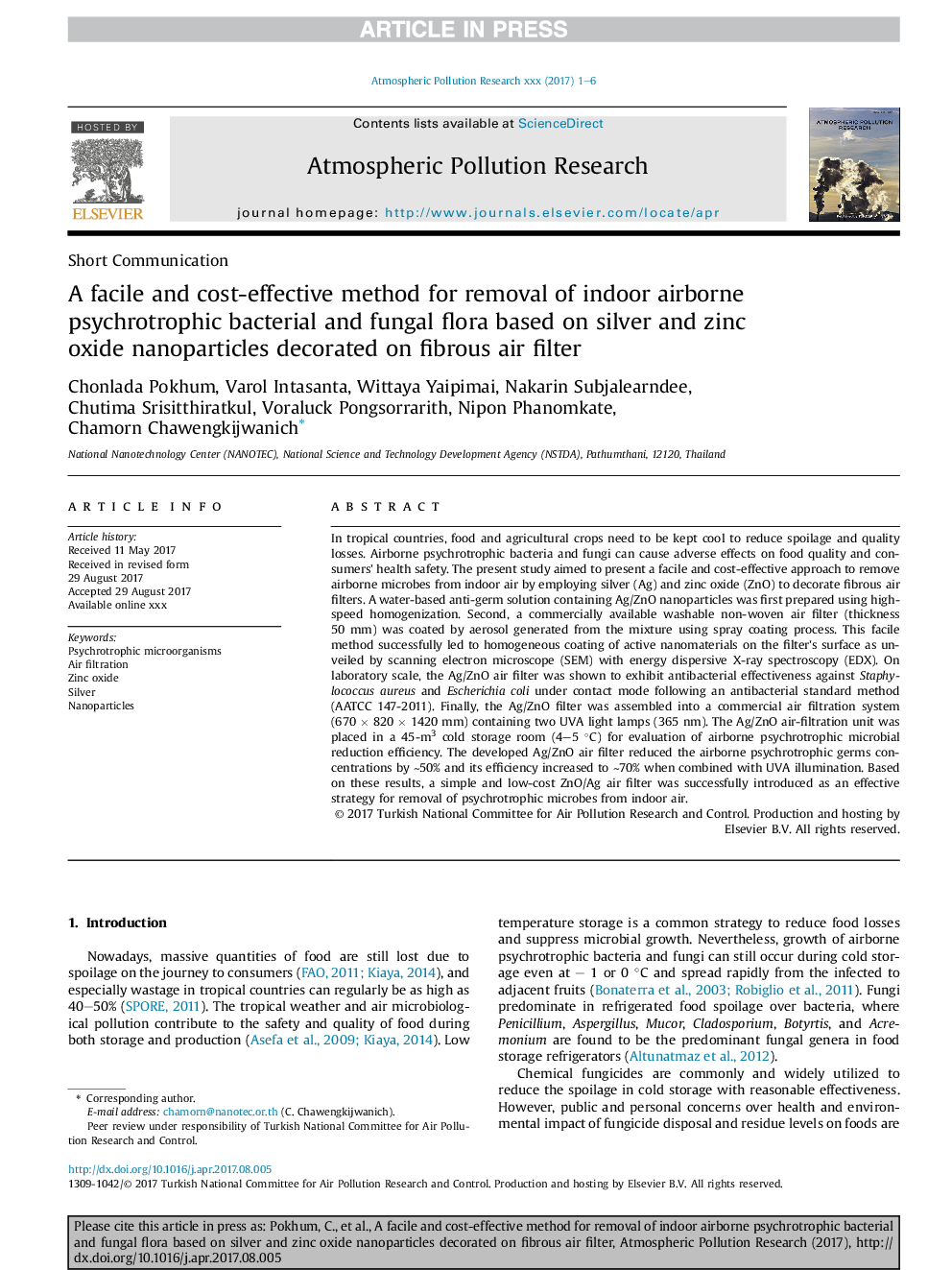| Article ID | Journal | Published Year | Pages | File Type |
|---|---|---|---|---|
| 8862684 | Atmospheric Pollution Research | 2018 | 6 Pages |
Abstract
In tropical countries, food and agricultural crops need to be kept cool to reduce spoilage and quality losses. Airborne psychrotrophic bacteria and fungi can cause adverse effects on food quality and consumers' health safety. The present study aimed to present a facile and cost-effective approach to remove airborne microbes from indoor air by employing silver (Ag) and zinc oxide (ZnO) to decorate fibrous air filters. A water-based anti-germ solution containing Ag/ZnO nanoparticles was first prepared using high-speed homogenization. Second, a commercially available washable non-woven air filter (thickness 50 mm) was coated by aerosol generated from the mixture using spray coating process. This facile method successfully led to homogeneous coating of active nanomaterials on the filter's surface as unveiled by scanning electron microscope (SEM) with energy dispersive X-ray spectroscopy (EDX). On laboratory scale, the Ag/ZnO air filter was shown to exhibit antibacterial effectiveness against Staphylococcus aureus and Escherichia coli under contact mode following an antibacterial standard method (AATCC 147-2011). Finally, the Ag/ZnO filter was assembled into a commercial air filtration system (670 Ã 820 Ã 1420 mm) containing two UVA light lamps (365 nm). The Ag/ZnO air-filtration unit was placed in a 45-m3 cold storage room (4-5 °C) for evaluation of airborne psychrotrophic microbial reduction efficiency. The developed Ag/ZnO air filter reduced the airborne psychrotrophic germs concentrations by â¼50% and its efficiency increased to â¼70% when combined with UVA illumination. Based on these results, a simple and low-cost ZnO/Ag air filter was successfully introduced as an effective strategy for removal of psychrotrophic microbes from indoor air.
Related Topics
Physical Sciences and Engineering
Earth and Planetary Sciences
Atmospheric Science
Authors
Chonlada Pokhum, Varol Intasanta, Wittaya Yaipimai, Nakarin Subjalearndee, Chutima Srisitthiratkul, Voraluck Pongsorrarith, Nipon Phanomkate, Chamorn Chawengkijwanich,
